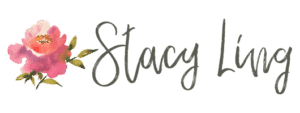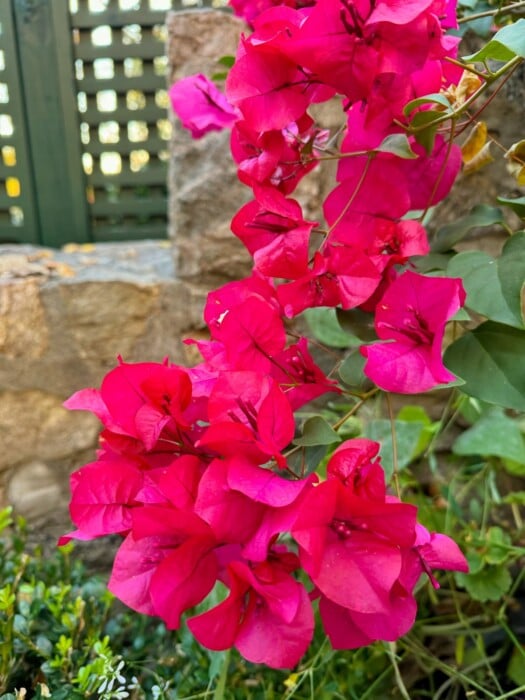Winter is coming! Don’t let your begonias die with the first frost. Learn how to overwinter begonias with ease so you can enjoy their beauty for seasons to come.
Begonias, with their beautiful and lush foliage, are a favorite among gardeners. From the flamboyant tuberous begonias with their rose-like flowers to the rex begonias boasting intricate leaf patterns, there’s a begonia to suit every taste.
But with so many varieties, it can be a bit overwhelming to understand their specific needs, especially when it comes to overwintering. This guide will walk you through the different types of begonias and provide detailed instructions on how to protect them from the cold and ensure their vibrant return next spring.
(Posts on stacyling.com may contain affiliate links. Click HERE for full disclosure.)

About Begonias
Begonias are a remarkably diverse group, boasting over 1,800 species! They originate from tropical and subtropical regions, which explains their sensitivity to frost. While they all share a love for warmth and humidity, they vary significantly in appearance and growth habits. Here are a few popular types:
- Tuberous Begonias: These are the stars of the summer garden, known for their large, showy flowers that resemble roses, carnations, or camellias. They grow from tubers, which are underground storage organs that allow them to survive periods of dormancy.
- Rex Begonias: These begonias are prized for their stunning foliage, which comes in a dazzling array of colors, patterns, and textures. Their leaves can be spotted, striped, spiraled, or even iridescent, making them a focal point in any plant collection.
- Wax Begonias: These are popular bedding plants, valued for their compact growth habit and continuous blooms throughout the summer. They are relatively low-maintenance and come in a variety of colors, including red, pink, white, and orange.
- Cane Begonias: These upright begonias have sturdy, cane-like stems and attractive, often angel-wing-shaped leaves. They are known for their long blooming season and come in a variety of colors, including pink, red, orange, and white.
- Rhizomatous Begonias: This diverse group includes many popular varieties with interesting leaf shapes and textures. They grow from rhizomes, which are thick, horizontal stems that spread along the soil surface.
Understanding the different types of begonias can help you choose the right overwintering method and provide the appropriate care for your plants.

Overwintering Methods
What You’ll Need to Overwinter Begonias
- hand trowel or shovel
- peat moss or vermiculite
- Box or bin
Lifting and Storing Tubers (For Tuberous Begonias)
Tuberous begonias, prized for their spectacular flowers, store energy in underground tubers during their growing season. To overwinter them, we need to protect these tubers from freezing temperatures.
- Wait until the first frost has blackened the foliage. This signals the plant to send its energy down to the tubers.
- Carefully dig up the tubers, leaving some soil around them to prevent damage.
- Cut off the stems about an inch above the tubers and let them cure in a cool, dry place for 2-3 weeks. This allows the cuts to heal and the tubers to dry.
- Gently remove any remaining soil from the cured tubers. Place them in a box filled with a moisture-absorbing material like peat moss, vermiculite, or sawdust.
- Store the box in a cool, dark place with good ventilation. A temperature range of 40-50°F is ideal. Check on them periodically to ensure they aren’t rotting.

Treating Them Like Houseplants (For Non-Tuberous and Tuberous Begonias)
Many begonias, especially non-tuberous varieties like rex, wax, and cane begonias, adapt well to indoor conditions. You can even overwinter tuberous begonias this way if you prefer not to dig up the tubers.
- Before the first frost, bring your potted begonias indoors.
- Choose a bright location with indirect light. An east- or west-facing window is perfect. Avoid direct sunlight, which can scorch the leaves.
- Reduce watering as the temperatures cool and growth slows. Allow the top inch of soil to dry out between waterings.
- Stop fertilizing your begonias during their winter rest.
- Begonias love humidity. Increase it by placing the pot on a tray of pebbles filled with water or using a humidifier.
- Maintain a comfortable room temperature (65-75°F). Avoid placing them near drafts or heat sources.

How to Overwinter Begonias in the Basement (For Non-Tuberous and Tuberous Begonias)
If you have a cool, dark basement, it can be an excellent place to overwinter your begonias.
- Pre-Frost Move: Bring your potted begonias to the basement before the first frost.
- Temperature and Light: The ideal basement temperature for overwintering is between 45-55°F. Begonias don’t need much light during their dormancy, so a dimly lit basement is fine.
- Minimal Watering: Water only sparingly during the winter months, just enough to prevent the soil from completely drying out.
- Spring Awakening: In early spring, move your begonias to a brighter location in the basement or indoors and gradually increase watering.
Greenhouse Living (For Non-Tuberous Begonias):
A greenhouse provides a controlled environment for overwintering non-tuberous begonias.
- Temperature and Ventilation: Maintain a cool temperature above freezing and ensure good ventilation to prevent diseases.
- Light and Watering: Provide adequate light and water sparingly during the winter months.

How to Overwinter Begonias in the Ground (For Hardy Begonias)
Only a few begonia varieties are hardy enough to survive mild winters outdoors. And whether or not they will survive will largely depend on your growing zone and how well you protect them.
- Suitable Varieties: Research to see if your begonia variety is hardy in your region.
- Mulch is Essential: Apply a thick layer of mulch to protect the roots from frost.
Extra Tips for Overwintering Begonias
- Label Your Plants: Keep track of different varieties by labeling your pots or tubers.
- Pest Patrol: Regularly check your plants for pests and treat them promptly if necessary.
- Patience is Key: It may take a few weeks for your begonias to show signs of life in spring.

Final Thoughts About Overwintering Begonias
Overwintering begonias might seem daunting, but with a little planning and effort, you can ensure these beauties grace your garden or home year after year. I’m excited to be overwintering my prized tuberous begonias in pots in my basement this year. I’ve found that this method allows me to keep a close eye on them and provides the cool, dark environment they need for their winter slumber.
In full transparency, I’m pretty new to overwintering them. It’s something I’ve always wanted to do but bring so many plants indoors for the season, I didn’t used to invest the time in them. But now I take that time, because I save so much money replanting them from season to season. Some I treat as houseplants (rex begonia, I’m looking at you!) and others I maintain in storage so they don’t need attention from me.
Remember to choose the method that best suits your needs and the specific type of begonias you have. Whether you choose to lift and store tubers, bring your plants indoors, or utilize a basement or greenhouse, the key is to provide the right conditions and care to ensure their successful overwintering.
For more information about overwintering begonias, please see this article from Oregon State Cooperative Extension.
And if there are other plants you want to overwinter as well, check out these articles:
Happy gardening!
Thank you for visiting the blog today!
Enjoy your day! xo







